The Swiss Alps are one of the most spectacular mountain ranges in the world, attracting hikers and trekkers from across the globe. But if you’re considering an adventure here, you might be wondering: Is it better to hike the Swiss Alps in winter or summer?
The short answer? For multi-day treks such as the Walker’s Haute Route, the Tour du Mont Blanc, or the Grand Tour des Combins, summer is by far the best time. While winter does have its own magic, most classic routes are only accessible from July through September.
At Adventure Base, we are specialists for guided treks in the Alps and self-guided alpine treks, so we know first-hand how conditions shift with the seasons. In this blog, we’ll compare summer and winter experiences to help you decide the right season for your Swiss alpine adventure.
Trekking in the Swiss Alps: Accessibility and Trail Conditions
When weighing up hiking the Swiss Alps in winter vs summer, accessibility is often the deciding factor. For the majority of hikers and trekkers, the perfect experience is a challenge outside of the comfort zone, but one that is still inherently enjoyable and memorable for all the right reasons. In this regard, summer ticks every box.
During the summer season (July to September), the trails are generally clear of snow, waymarked, and well-maintained. High passes open up, mountain huts are staffed, and public transport links such as mountain trains and cable cars run on their full summer schedules. This is when classic long-distance treks like the Walker’s Haute Route and the Tour du Mont Blanc are not just possible, but at their unforgettable best.
In winter, however, the picture changes dramatically. Snow covers much of the terrain, trails are often buried, and high passes close. While Switzerland does offer a network of signposted winter hiking trails, they rarely follow the same routes as the summer treks. Navigation can be tricky, conditions can change quickly, and avalanche risk is a serious concern in some areas. For hut-to-hut trekking like the Grand Tour des Combins, winter conditions make it virtually impossible without specialist skills and equipment.
If you’re hoping to tackle a multi-day trek, the best time to hike the Swiss Alps is without question the summer season.
Are you new to alpine adventures and curious about the differences between hiking, trekking, and mountain climbing? Be sure to read our blog What’s the Difference Between Hiking and Mountain Climbing? when you have finished here.
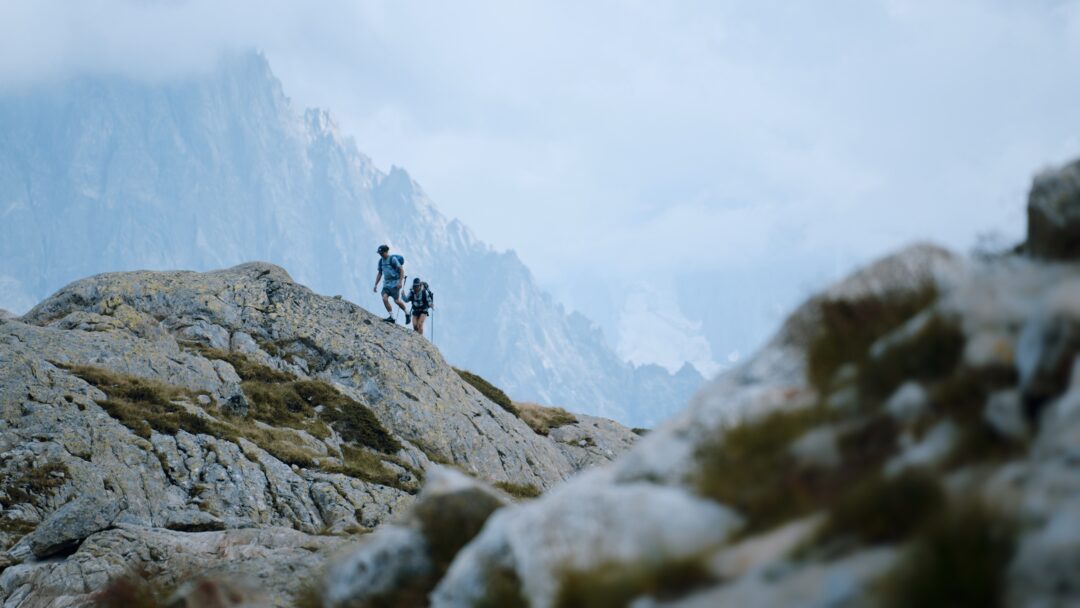
Weather, Terrain, and Comfort in the Swiss Alps
One of the biggest draws of Swiss Alps summer hiking is the weather. During July and August, daytime valley temperatures typically sit between 15 and 27 °C, while higher passes remain pleasantly cool. Days are long, giving you more light to complete your stages, and the scenery is at its best: think alpine meadows in full bloom, glacial rivers, and endless mountain panoramas.
By contrast, winter hiking Swiss Alps challenges include freezing temperatures, short daylight hours, and the physical effort of moving through deep snow or icy terrain. You’ll need snowshoes or crampons in many areas, as well as winter-specific gear and clothing. While the snowy landscapes can be stunning, the comfort level is significantly lower, especially for long-distance routes where huts may be closed or only offer minimal facilities.
If your goal is to enjoy the Swiss Alps at their most accessible and comfortable, summer offers a much better balance.
Our blog When is a Good Time of Year to Hike in the Alps? is the perfect companion piece to this guide. It’s filled with even more expert insights to help you find the ideal time of year for an alpine adventure.
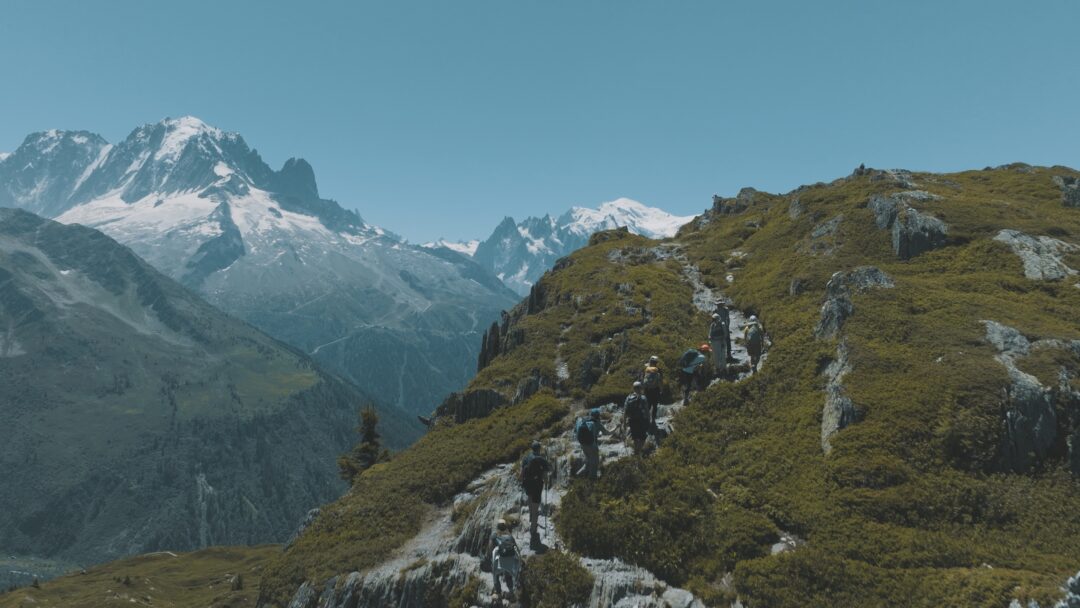
Safety Considerations When Trekking in the Swiss Alps
Safety is a key factor when choosing between the seasons. In summer, trails are well-marked and maintained, with Swiss signage systems making navigation straightforward even for those new to the Alps. Avalanche risk is minimal, and mountain huts are fully staffed to provide food, rest, and shelter. We think you’ll find them surprisingly comfortable! On a guided trek, like ours, you’ll also benefit from local knowledge and structured safety protocols.
Winter, however, poses a very different set of challenges. Snow and ice increase the risk of slips and falls, avalanche risk is a constant concern, and weather changes can be sudden and severe. Some routes are re-marked for winter walking, but they don’t usually align with the classic hut-to-hut trekking routes. Unless you are an experienced winter hiker with the right gear and avalanche awareness training, long-distance winter treks are not advisable.
For most trekkers, summer is the safer and more practical option.
Are you still undecided about whether to take the guided or self-guided route? Don’t miss our blog How Easy and Accessible is Hiking Self-guided in the Alps? It will help make your decision easier!
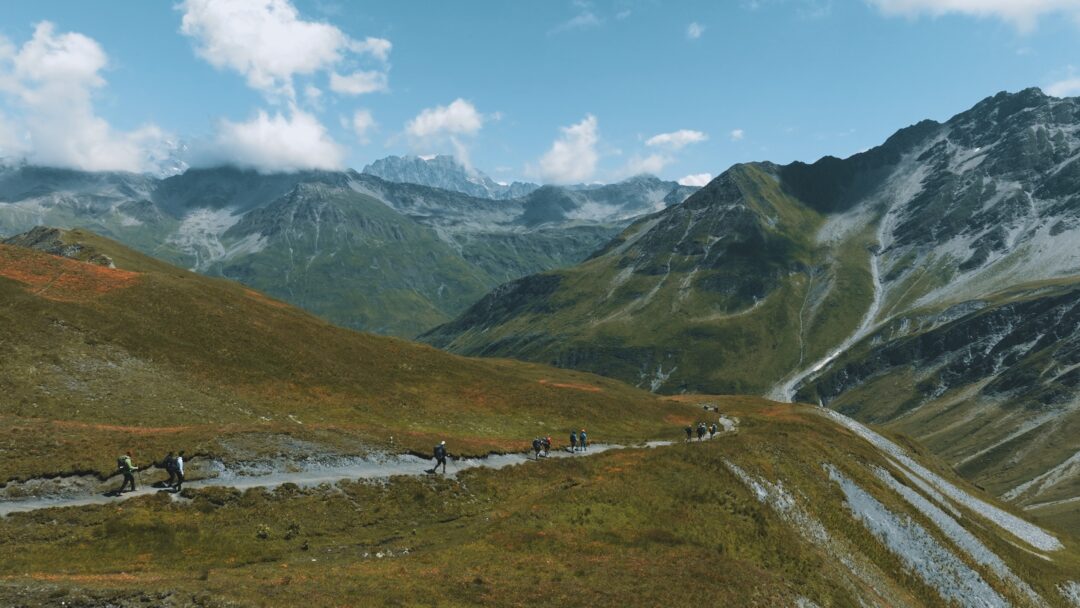
Summer Treks in the Swiss Alps You Won’t Want to Miss
So, is summer hiking in Switzerland the ideal option for you? At Adventure Base, we offer a range of treks that showcase the best of the Swiss Alps during the summer season:
- Walker’s Haute Route – One of the world’s most iconic hut-to-hut trails, this route links Chamonix in France and Zermatt in Switzerland via a series of breathtaking high passes. It’s an unforgettable journey through the heart of the Alps that’s best enjoyed with a guide. We offer two different itineraries for varying schedules with our 11-day Haute Route Guided Trek and our 6-day Haute Route Guided Trek.
- Tour du Mont Blanc – Crossing France, Italy, and Switzerland, this classic trek is a rite of passage for mountain lovers and trekking enthusiasts. With our 11-day Tour du Mont Blanc Guided Trek and our 4-day Guided Tour du Mont Blanc Highlights Trek, you can explore the Swiss sections (and so much more!) in their full summer glory.
- Grand Tour des Combins – A quieter alternative and one of the Alps’ best-kept secrets, this trek encircles the majestic Grand Combin massif. Expect wild, rugged landscapes with fewer crowds as you cross from Switzerland to Italy and back again. We offer two incredible options for this experience — the 10-day Grand Tour des Combins Self-Guided Trek and the shorter 7-day Grand Tour des Combins Self-Guided Trek.
All three treks are only available during the summer months, between July and September — another clear sign that it’s the best time to hike the Swiss Alps!
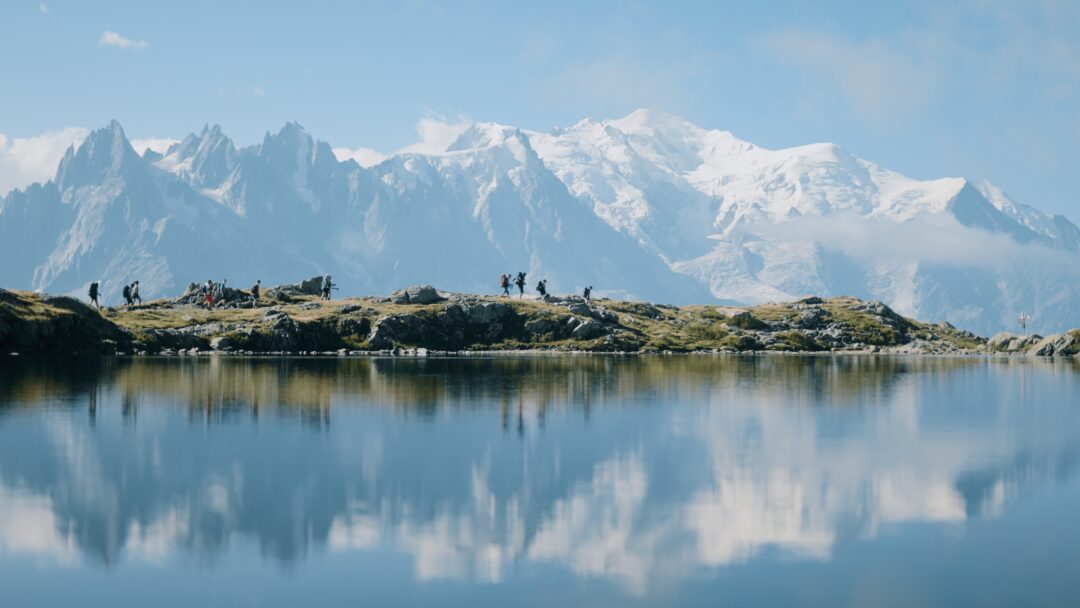
Who Winter Hiking in the Swiss Alps is Really For
That said, winter in the Alps does have its own appeal. Snowshoeing and shorter winter walking routes can be magical, offering solitude and sparkling alpine scenery. For example, lantern-lit trails to alpine monasteries such as the St Bernard Hospice provide a unique experience. Our 10-day Grand Tour des Combins self-guided trek includes an overnight stay at this iconic location during summer.
However, these adventures are very different from the multi-day treks most people imagine when they think of hiking the Swiss Alps. They require specialised equipment, careful route selection, and often guided support. If your dream is a long-distance hut-to-hut journey such as the Walker’s Haute Route or TMB, winter simply isn’t the right time.
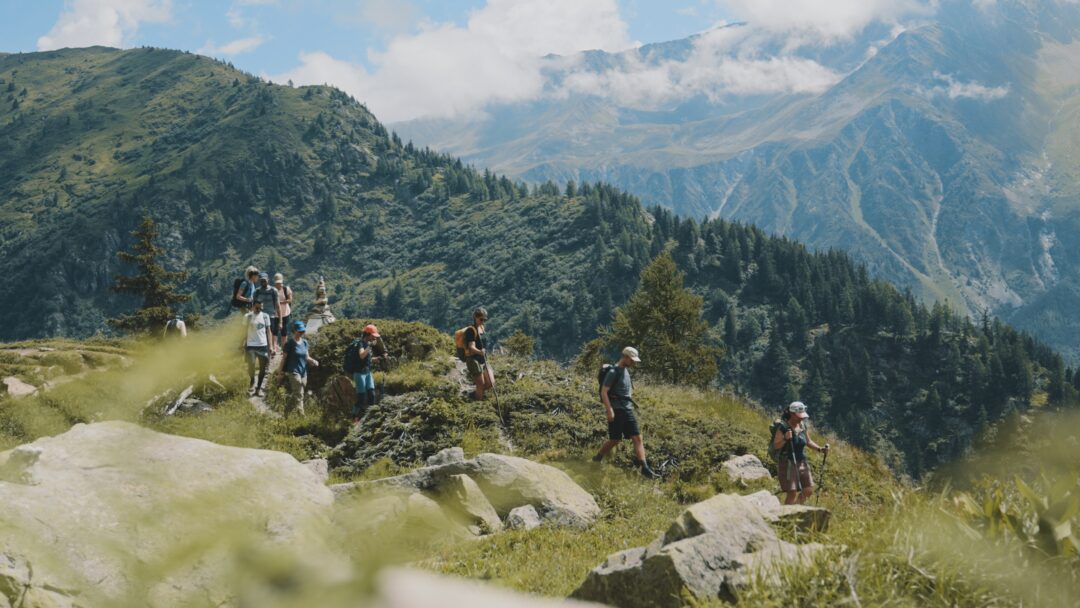
Ready to Plan Your Trek in the Swiss Alps?
At Adventure Base, we believe summer is the perfect season to experience the Alps in all their glory. Whether you’re drawn to the Walker’s Haute Route, the Tour du Mont Blanc, or the Grand Tour des Combins, our guided treks in the Alps and self-guided alpine treks are designed to help you make the most of your adventure.
So, lace up your boots, plan for the summer months, and let’s make your Swiss Alpine trek one to remember. Browse our range of experiences that include Switzerland and see which one is the best fit for you. And if you have any questions for us, please don’t hesitate to get in touch.

